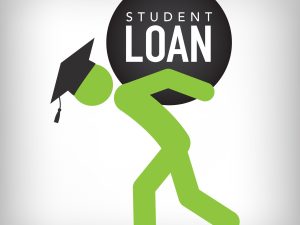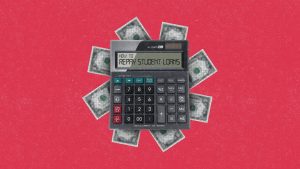Understanding Student Loans: A Comprehensive Guide

Student loans are a crucial financial tool for many individuals pursuing higher education. With the rising costs of tuition, fees, and other educational expenses, student loans help bridge the gap between personal or family savings and the total cost of attending college or university. However, understanding the intricacies of student loans is essential to making informed decisions and managing debt effectively. This article provides an in-depth look at student loans, covering types, application processes, repayment plans, and tips for managing student debt.
The Importance of Student Loans
Education is a significant investment in one’s future, often leading to better career opportunities and higher earning potential. However, the cost of education can be prohibitive for many families. Student loans make it possible for students from diverse financial backgrounds to access higher education, which might otherwise be out of reach.
Types of Student Loans
Student loans are broadly categorized into federal and private loans. Each type has its own set of terms, conditions, and benefits.
Federal Student Loans
Federal student loans are funded by the U.S. government and generally offer more favorable terms compared to private loans. Here are the main types of federal student loans:
1. Direct Subsidized Loans
Direct Subsidized Loans are available to undergraduate students with demonstrated financial need. The government pays the interest on these loans while the student is in school at least half-time, during the six-month grace period after leaving school, and during periods of deferment.
2. Direct Unsubsidized Loans
Direct Unsubsidized Loans are available to both undergraduate and graduate students, regardless of financial need. Unlike subsidized loans, interest accrues on unsubsidized loans from the time the funds are disbursed, and the borrower is responsible for paying all accrued interest.
3. Direct PLUS Loans
Direct PLUS Loans are available to graduate or professional students and parents of dependent undergraduate students. These loans require a credit check, and borrowers can take out loans up to the cost of attendance minus any other financial aid received. PLUS Loans tend to have higher interest rates compared to other federal student loans.
4. Direct Consolidation Loans
Direct Consolidation Loans allow borrowers to combine multiple federal student loans into a single loan with one monthly payment. This can simplify repayment and provide access to additional repayment plans and forgiveness programs.
5. Perkins Loans (Discontinued)
Perkins Loans were low-interest federal loans for undergraduate and graduate students with exceptional financial need. This program was discontinued in 2017, but existing loans are still being serviced.
Private Student Loans
Private student loans are offered by banks, credit unions, and other private lenders. These loans typically have variable interest rates, and the terms are determined by the lender based on the borrower’s creditworthiness and other factors. Private loans are often used to cover the gap between federal loan limits and the total cost of attendance.
Applying for Student Loans

The process of applying for student loans involves several steps, from determining financial need to submitting applications and accepting loan offers.
1. Completing the FAFSA
The first step in applying for federal student aid is completing the Free Application for Federal Student Aid (FAFSA). The FAFSA collects information about the student’s and their family’s financial situation and is used to determine eligibility for federal grants, work-study programs, and loans. Many states and colleges also use the FAFSA to award their own financial aid.
2. Receiving the Student Aid Report (SAR)
After submitting the FAFSA, the student will receive a Student Aid Report (SAR) summarizing the information provided and the student’s Expected Family Contribution (EFC). The EFC is used by colleges to determine the student’s financial need and aid eligibility.
3. Financial Aid Offers
Based on the FAFSA, colleges will send financial aid offers outlining the types and amounts of aid the student is eligible to receive, including grants, scholarships, work-study, and loans. Students should carefully review these offers and compare the aid packages from different schools.
4. Accepting Loans
Students must accept or decline each component of the financial aid offer. For loans, this involves deciding how much to borrow. It’s advisable to borrow only what is necessary to cover educational expenses.
5. Master Promissory Note (MPN) and Entrance Counseling
First-time federal loan borrowers must complete a Master Promissory Note (MPN), a legal document in which the borrower agrees to the terms of the loan and promises to repay it. Additionally, borrowers must complete entrance counseling, an online session that explains the responsibilities and terms of borrowing federal student loans.
6. Private Loan Application
For private student loans, students must apply directly with the lender, who will evaluate the borrower’s credit history, income, and other factors. Often, a co-signer with a strong credit profile is required to secure a private loan.
Repayment Plans and Strategies

Repaying student loans effectively requires understanding the available repayment plans and choosing the one that best fits your financial situation. Federal student loans offer several repayment options, while private loans generally have fewer flexible terms.
Federal Student Loan Repayment Plans
1. Standard Repayment Plan
Under the Standard Repayment Plan, borrowers make fixed monthly payments over a period of 10 years. This plan usually results in the lowest total interest paid over the life of the loan.
2. Graduated Repayment Plan
The Graduated Repayment Plan starts with lower payments that increase every two years. The repayment period is typically 10 years. This plan is suitable for borrowers who expect their income to increase over time.
3. Extended Repayment Plan
The Extended Repayment Plan allows borrowers to stretch their payments over up to 25 years, with either fixed or graduated payments. This plan can lower monthly payments but results in higher total interest paid.
4. Income-Driven Repayment Plans
Income-driven repayment (IDR) plans adjust monthly payments based on the borrower’s income and family size. These plans can provide more manageable payments and include:
- Income-Based Repayment (IBR): Payments are 10-15% of discretionary income, with forgiveness after 20-25 years.
- Pay As You Earn (PAYE): Payments are 10% of discretionary income, with forgiveness after 20 years.
- Revised Pay As You Earn (REPAYE): Payments are 10% of discretionary income, with forgiveness after 20-25 years.
- Income-Contingent Repayment (ICR): Payments are the lesser of 20% of discretionary income or the amount of a fixed 12-year payment plan, with forgiveness after 25 years.
5. Public Service Loan Forgiveness (PSLF)
The Public Service Loan Forgiveness program forgives the remaining loan balance after 120 qualifying monthly payments while working full-time for a qualifying employer, such as a government or non-profit organization.
Private Student Loan Repayment
Private student loans typically have fewer repayment options and less flexibility compared to federal loans. Repayment terms vary by lender, and borrowers should carefully review the terms of their loan agreement. Options may include:
- Immediate Repayment: Payments begin immediately after the loan is disbursed.
- Interest-Only Repayment: Borrowers pay only the interest while in school, with principal payments starting after graduation.
- Deferred Repayment: Payments are deferred until after graduation, but interest accrues during the deferment period.
Tips for Managing Student Loan Debt
Effectively managing student loan debt involves planning, budgeting, and taking advantage of available resources. Here are some tips to help you stay on top of your student loans:
1. Create a Budget
Develop a budget to track your income and expenses. Include your student loan payments in your budget to ensure you can meet your obligations while covering other living expenses.
2. Make Extra Payments
If possible, make extra payments toward your loan principal. This can reduce the total interest paid over the life of the loan and help you pay off your debt faster.
3. Refinance or Consolidate Loans
Refinancing involves taking out a new loan with a private lender to pay off existing loans, potentially securing a lower interest rate. Consolidation combines multiple federal loans into a single loan with one monthly payment. Evaluate the pros and cons of each option based on your financial situation.
4. Explore Forgiveness and Repayment Assistance Programs
Research federal, state, and employer-based forgiveness and repayment assistance programs. These programs can help reduce or eliminate your student loan debt under certain conditions.
5. Stay Informed
Keep track of changes in student loan policies and programs. Staying informed can help you take advantage of new repayment options and benefits.
6. Seek Professional Advice
If you’re struggling to manage your student loans, consider seeking advice from a financial advisor or a nonprofit credit counseling agency. They can help you develop a repayment strategy and explore available options.
Common Challenges and How to Overcome Them
Managing student loan debt can be challenging, especially for recent graduates. Here are some common challenges and strategies to overcome them:
1. High Monthly Payments
High monthly payments can strain your budget and make it difficult to cover other expenses. Consider switching to an income-driven repayment plan or refinancing to a lower interest rate to reduce your payments.
2. Interest Accumulation
Interest accumulation can significantly increase the total cost of your loan. Making interest-only payments while in school or during deferment periods can help minimize the impact of interest accumulation.
3. Loan Default
Defaulting on your student loans can have severe consequences, including damage to your credit score, wage garnishment, and loss of eligibility for future financial aid. If you’re struggling to make payments, contact your loan servicer to discuss your options, such as deferment, forbearance, or a revised repayment plan.

